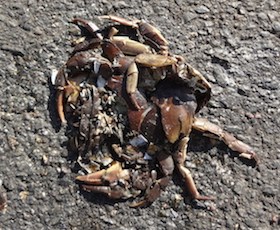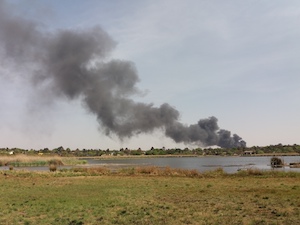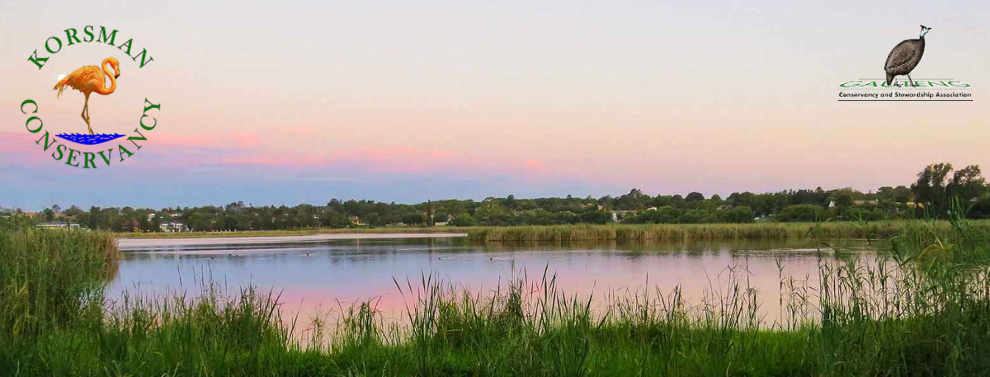
KORSMAN CONSERVANCY
Litter
Picnickers and passers-by throw litter over the fence inside the bird sanctuary.
A great deal of litter washes into the Sanctuary from the catchment via stormwater drains.
Environmental Challenges
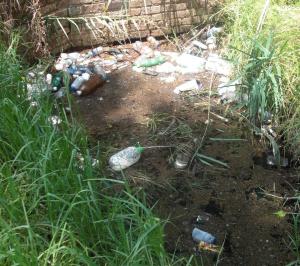
Sewerage Spills
Two pump stations pump the sewerage which drains from the entire suburb, to the treatment plant a few kilometres away.
Spills into the pan occur due to pump failures, pipe blockages and cracked pipes.
This has negatively affected the water quality.
Feral and Domestic Animals
Cats enter the Sanctuary to catch birds and frogs.
Escaped exotic water fowl sometimes appear such as mandarin ducks or black swans which naturalised in the Sanctuary.
Alien and Invasive Plants
Invasive vegetation is our biggest environmental threat.
Some troublesome Category 1b plants found in Korsman include:
- Black Locust - Spear Thistle
- Bugweed - Pom Pom Weed - Purple Top - Jerusalem Cherry
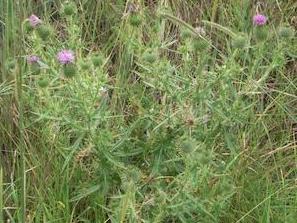
High Water Level
A massive municipal water leak, higher residential density and large homes have increased runoff over the years that the Pan water level is much higher than historically.
This reduces biodiversity by flooding the grassland, eliminating habitat for waders and allowing encroachment of reeds.
At one stage, an evacuation pump in the Westdene North pump station transported the water via the Benoni Lake golf course into Middle Lake. This pump has been removed from the pump station and never replaced.
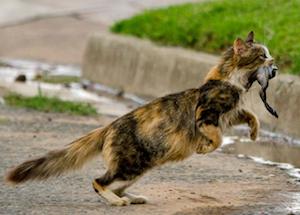
Secondary Poisoning
Owls which eat poisoned rats and vermin are killed in turn by the ingested poison. The best way to prevent vermin is keeping the property clean. All rat poisons are dangerous, with Racumin the least toxic.
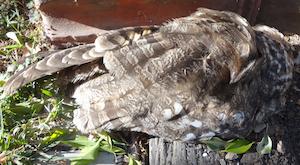
Invasive Fauna
|
Common myna birds eat the eggs of and kill chicks of local birds, especially hole nesters such as barbets.
Photo by Eugene Liebenberg
|
|
|
Mallard ducks are a Category 1b invader as they interbreed with Yellow-billed ducks and teals.
Hybrid Mallard photo by Werner van Goethem
|
|
|
Carp are a Category 2 invader which compete for food sources with indigenous fish and dabbling waterfowl.
Photo by Eugene Liebenberg
|
|
|
Asian Harlequin beetles are a variable species that look like ladybirds. They outcompete indigenous ladybirds, carry parasites and even eat their larvae.
Harlequins are recognised by the black W / white M shape on the pronotum (behind the head.)
|
|
Air and Noise Pollution
Air pollution comes from nearby industries and illegal rubbish burning.
Noise pollution which disturbs the birds is caused by industries, cars, firework displays and loud events.
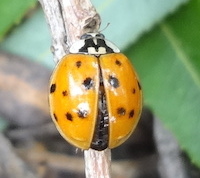
X

Speeding Vehicles
Vehicles on The Drive kill birds, frogs and crabs, and threaten pedestrians and cyclists.
